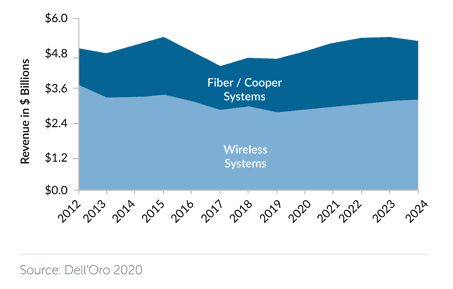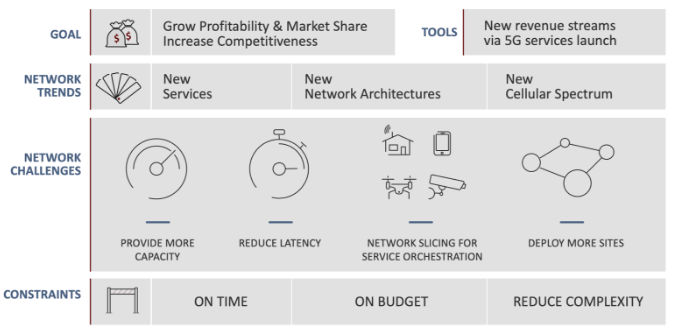×
CONTACT US
CONTACT US
Have you ever wondered how information travels on the internet or how data traffic flows from one point to another? Have you thought about what exactly is needed in between these points to allow them to interface with each other? The public internet, or any other data network, performs a very basic (though not so simple) task: transferring data from one end (e.g. your smartphone) to the other (e.g. a website) and back. This task is performed by several network segments:
Backhaul, therefore, is the connection between an access node and the core network.
A backhaul network is planned according to a number of factors including the required transfer rate, known as bandwidth, and the time it takes for data to go from one point to another, known as latency. Interference, reliability, scalability and speed are traffic needs that have a great impact on end users.
Looking into backhaul options, network operators typically use a combination of two commonly used infrastructures: fixed-line or wireless.
Based on fiber, fixed-line backhaul involves deploying fiber infrastructure or leasing unused (dark) fiber, such as a wavelength or a certain capacity, from a third party that already owns fiber infrastructure. Leasing existing lines requires a significant increase in operating expenses and, in some cases, compels the network operator to depend on a direct competitor. Laying new fiber-optic lines is capital-intensive, and these lines cannot be rapidly deployed.
Wireless backhaul infrastructure includes point-to-point (PtP) and point-to-multipoint (PtMP) microwave (MW) and millimeter wave (mmW) equipment. Wireless backhaul is widely used where deploying fiber is not feasible, cost-efficient, or possible due to time constraints.
Wireless backhaul involves microwave systems that use radio frequencies as the transmission medium. The radio spectrum in the MW band covers 6-42 GHz and is widely used to transfer multiple Gbps for distances of up to 250 kilometers. Higher bands such as the mmW E-Band (71-86GHz) are used to transfer larger amounts of data for shorter distances (up to 20Gbps for a few kilometers).
According to Dell’Oro, wireless systems revenue will expand by 3% CAGR over the next five years, reaching $2.7 B by 2024. Fiber systems revenue is forecast to grow at an average annual rate of 6% through 2022, and then decline for the duration of the forecast period.

Fiber-based networks can easily support the rapid growth in bandwidth demands, but they carry high initial deployment costs and take much longer to deploy than wireless. As a result, most network operators rely heavily on wireless backhaul solutions.
Mobile network evolution towards 5G is driven by the business opportunity to grow profitability, expand market share, and increase competitiveness. New service offerings realize this potential, resulting in new revenue streams and enhanced business success.
However, there are several network trends – including the introduction of new services, open network architectures and higher cellular spectrum – that pose new challenges for mobile operators. These challenges range from providing up to 100 times more capacity in every network domain through achieving ultra-low latency to using mid-bands and mmW to manage network densification in 5G.
Those challenges must be addressed under some key constraints:


Resolving the abovementioned challenges under the listed constraints calls for a highly flexible and cost-efficient solution. Specifically, deploying more sites with higher capacity and reduced latency while supporting multiple services requires backhaul that allows operators to eliminate dependency on fiber availability and feasibility when planning, locating and acquiring new cell sites.
Wireless (microwave and millimeter wave) solutions bring the flexibility, agility and efficiency required for 5G network deployment while answering all of the aforementioned 5G-specific network challenges.
Private data networks – serving enterprises, small businesses, municipalities, educational institutions and other organizations – require reliable, high-speed, low-latency, high-density broadband connectivity. Enterprise networking is becoming more and more crucial to organizational business continuity and the demand for capacity is enormous. Business applications, multimedia traffic and even basic intra- and inter-organizational communication make massive demands on capacity, which in turn drives significant growth in enterprise networking scales. These capacity and connectivity requirements are addressed by either leased lines or private networks.
Private networks increasingly are becoming the preferred approach for delivering broadband connectivity to enterprise, campus and industrial IoT environments. The need for greater security, enhanced reliability and low costs is the main driving force of private networks that are based on 5G or other broadband technologies.
A major part of private network infrastructure is backhaul, also often referred to as transmission.

Critical infrastructure users have very demanding needs, and they want their communications to always be available and secure. Critical communications users include public safety agencies, utilities, transportation companies and other professionals. For them and the people they protect and serve, communications can be a matter of life or death.
Existing mission-critical networks are based on specialized digital technologies, such as TETRA, Tetrapol and P25, and by their nature are voice-centric and narrowband. However, the critical infrastructure segment is evolving at a rapid pace, and many public safety organizations are looking at 4G and 5G technologies to deliver real-time video, high-resolution imagery, multimedia messaging, situational awareness, unmanned asset control, and other broadband capabilities. The Emergency Services Network (ESN) in the UK, FirstNet in the US, and SafeNet in the Republic of Korea are among the nation’s first public safety broadband networks that are based on standard industry technologies. As in the previous cases, a main pillar in building mission-critical networks is backhaul.

Copyright © Ceragon | Terms & Conditions | Privacy Policy